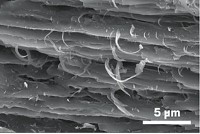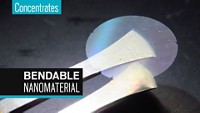Advertisement
Grab your lab coat. Let's get started
Welcome!
Welcome!
Create an account below to get 6 C&EN articles per month, receive newsletters and more - all free.
It seems this is your first time logging in online. Please enter the following information to continue.
As an ACS member you automatically get access to this site. All we need is few more details to create your reading experience.
Not you? Sign in with a different account.
Not you? Sign in with a different account.
ERROR 1
ERROR 1
ERROR 2
ERROR 2
ERROR 2
ERROR 2
ERROR 2
Password and Confirm password must match.
If you have an ACS member number, please enter it here so we can link this account to your membership. (optional)
ERROR 2
ACS values your privacy. By submitting your information, you are gaining access to C&EN and subscribing to our weekly newsletter. We use the information you provide to make your reading experience better, and we will never sell your data to third party members.
Materials
The Toucan Beak, inside and out
Tough exterior and rigid foam interior make toucan beak both strong and light
by Sophie L. Rovner
December 8, 2005

What makes the colorful beak of a toucan both strong and light? To find out, University of California, San Diego, materials scientist and engineer Marc A. Meyers and his colleagues studied the structure and mechanical properties of the toucan’s beak, which measures one-third the length of the bird but accounts for a mere one twentieth of its weight (Acta Mater. 2005, 53, 5281).
Using electron microscopy, the researchers found that the exterior of the beak is made up of overlapping tiles of keratin, the sulfur-containing fibrous protein that makes up hair, fingernails, and horn. The interior of the beak is constructed of a rigid foam (shown) made of a network of calcium-rich bony fibers connected by membranes. The membranes are similar in composition to keratin.
Meyers was surprised by the beak’s ability to absorb high-energy impacts. Its structure could serve as the inspiration for automotive panels that could protect passengers in crashes and could also be used for ultralight aircraft components, according to the researchers.





Join the conversation
Contact the reporter
Submit a Letter to the Editor for publication
Engage with us on Twitter